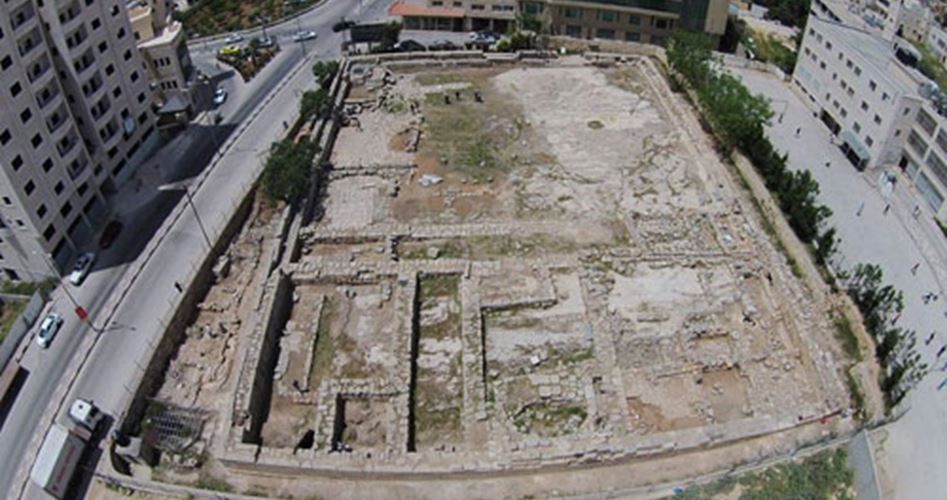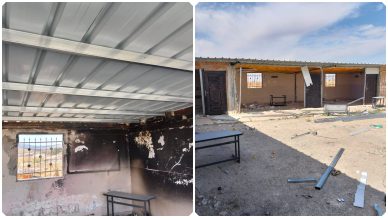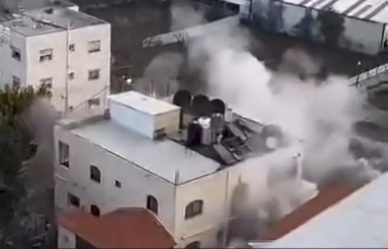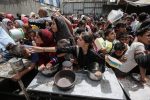In the northern part of the city of Hebron an archaeological site called the Haram Al-Rama is located. It is a building surrounded by an ancient wall built using massive stones some 4000 years ago. It is surrounded by vineyards walnut trees almonds figs and olives. It is adjacent to the area of the water-well of Haram Al-Rama next to Al-Rama Mosque that is full of beauty where the call to prayer is heard and prayers are held and worshipers attend the Friday Prayer.
Numan Qasatli Al-Damashqi who worked with the Exploration Fund of Palestine for three years (1874-1877) wrote in his book titled The Numanian Encyclopedia in the Tourism of Palestine and Some of the Levant Countries which was examined by Tayseer Khalaf: “The site of Al-Rama was an ancient city in the land of Canaan Hebron and its location is to the north of Hebron and it was famous in the past time but now it is completely destroyed and only the ruins of a big building that takes a square shape is left standing there.”
Exploratory excavations
Dr. Ahmed Al-Rajoub Director General of the Ministry of Tourism and Antiquities in the south of the West Bank spoke of the history of Haram Al-Rama: Several excavations were carried out in the area. The French and British sent missions to the site while excavations were carried out by the colonial authorities. For example in 1926 the German archaeologist Madar had a biblical goal behind his excavations; he grabbed the Torah in one hand and a hammer in the other.
Rajoub said in an interview with the PIC correspondent: “In 1967 there were Israeli excavations and they were not interested in revealing the real history of the site and did not follow the correct scientific approach in their work. The purpose of those excavations was to prove any historical connection of the Jews in that region to the site.”
In the opinion of the researcher in the affairs of Hebron Mohammed Diab Abu Saleh the historical accounts indicate that when Prophet Abraham came to Hebron he lived in Mamre or the so-called the water-well of Al-Rama. This name is associated with the Canaanite owner of the land Mamre who gave it to Abraham to dwell in it and to set up his tent. He placed it under the oak trees and dug a water-well naming it the water-well of Al-Rama.
Abu Saleh said in an exclusive interview with the PIC: “Many unverified accounts indicate that angels visited Abraham in Haram Al-Rama and told him of the coming of his son Isaac. It was a miracle because Sarah his wife was old and they told him that God will punish the people of Lot in the Dead Sea area. Abraham tried to remove the torment of the people of Lot but their sins were great and they were punished by God.
Refuting the Zionist narrative
He confirmed that a French research team consisting of four archaeologists specialized in the planning of archaeological maps identifying ancient bones ceramics and coins came to the site and they conducted studies and researches to explore the history of the site away from the Zionist narrative. This project was in collaboration with the Palestinian Ministry of Antiquities and a French university for four years funded by the French Ministry of Foreign Affairs.
The settlers stormed the site of Haram Al-Rama under the protection of the Israeli army hundreds of times and performed Talmudic rituals to try to change the identity of the place and make it look like a Jewish landmark because it is related to Abraham and his children peace be upon them. The settlers deliberately break into the area of Haram Al-Rama and organize celebrations and rituals where they raise Israeli flags in the place claiming that it contains relics of their history and heritage.
However settlement researcher Abdel Hadi Hantash said that one of the settlers’ practices is storming most of the archaeological sites in Palestine to search for false historical narratives to justify their settlement in Palestinian areas.
He added: “We have followed the footsteps of settlers in this direction. We found that they were looking for a mirage. They broke into dozens of sites in the Hebron governorate based on the Talmudic narrative. They stormed the Ibrahimi Mosque and the well of Rama Deir al-Arbaeen Al-Mawarraq Dura Balouta north of Yatta Halhul and Khirbet Jala. Yet the Palestinians’ determination foiled these Israeli allegations.”













